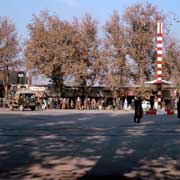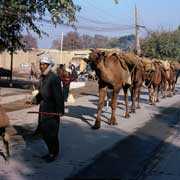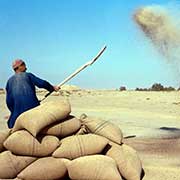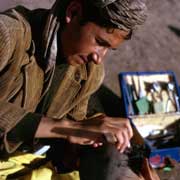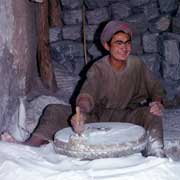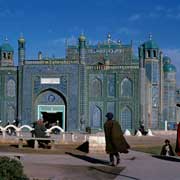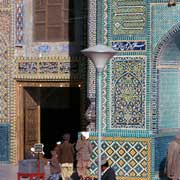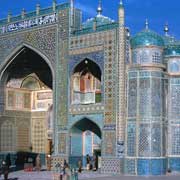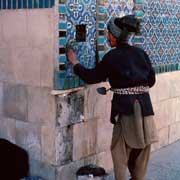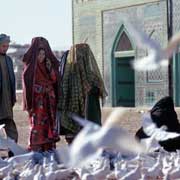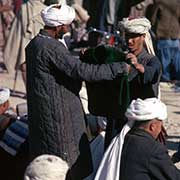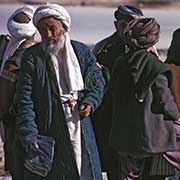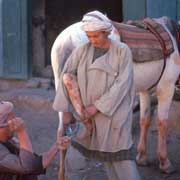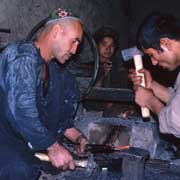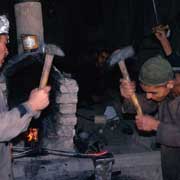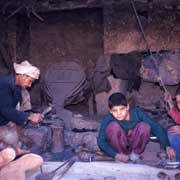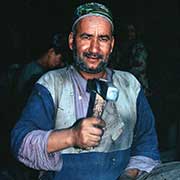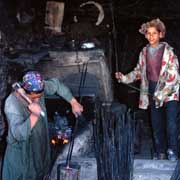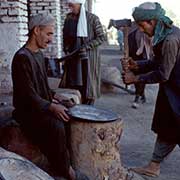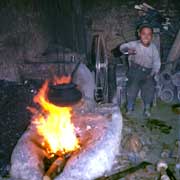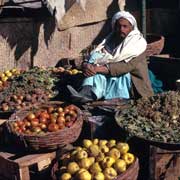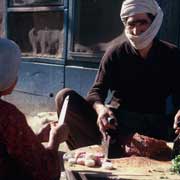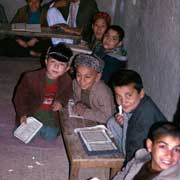Photos from Afghanistan
Kunduz and Mazar-e-Sharif, northern Afghanistan
Kunduz is a city in northern Afghanistan, to the east of Mazar-e-Sharif, on the road to Kabul and the gateway to the northeastern province of Badakhshan. It is the capital of the province with the same name, the most important agricultural region, producing wheat, rice, millet, and other products. It presently has a population of around 95,000 people. Kunduz was the last major city held by the Taliban before its fall to US-backed Afghan Northern Alliance forces on 26 November 2001.
you may then send it as a postcard if you wish.
Mazar-e-Sharif is the capital of Balkh province and Afghanistan’s fourth-largest city with a population of about 380,000. Its name means “Noble Shrine”, a reference to the large, blue-tiled sanctuary and mosque in the centre of the city, known as the Shrine of Hazrat Ali or the Blue Mosque. Some Muslims believe that this is the site of the tomb of Ali ibn Abi Talib, the cousin and son-in-law of the Prophet Muhammad, the Fourth Caliph of Islam. Ali was assassinated in 661 and buried near Baghdad, but his followers, who feared his grave could be desecrated, took him to the present site where they built a shrine in 1136. This shrine was destroyed by Genghis Khan but rebuilt in 1481 during the reign of the Timurid Sultan Hussain Baiqara. The original decorations are long since lost, but recent repairs have restored it to its former glory, and it is one of the most magnificent examples of Islamic architecture. Mazar is therefore considered a sacred city and a place of pilgrimage, especially on Naw Ruz, the Muslim New Year. Family members of Emir Dost Muhammad Khan who reigned from 1826-1863 are also buried here, including his son Mohammad Akbar Khan, who was of significant influence during the First Anglo-Afghan War (1838-1842).
The city is also famous for its carpets, mainly Turkmen: there is a population of Turkmen people here, related to the people of Turkmenistan, north-west of Afghanistan. Before the devastating wars, Mazar-e-Sharif was also renown for its cotton and silk industries; it was a centre for trade in Karakul wool and horses. During the Soviet invasion of Afghanistan, Mazar-e-Sharif was a strategic base for the Soviet Army, as they used its airport to launch airstrikes on Afghan mujahideen. Under Dostum’s Uzbek Jumbesh-e Melli militia from the early 1990s to early 1997, Mazar, however, was an oasis of peace during the civil war, until it fell to the Taliban in 1998, the last city to do so. It was also the first city the Taliban lost and it became the scene of a massacre of Taliban prisoners by the victorious Northern Alliance, after the collapse of the regime following the American air attacks in late 2001.



